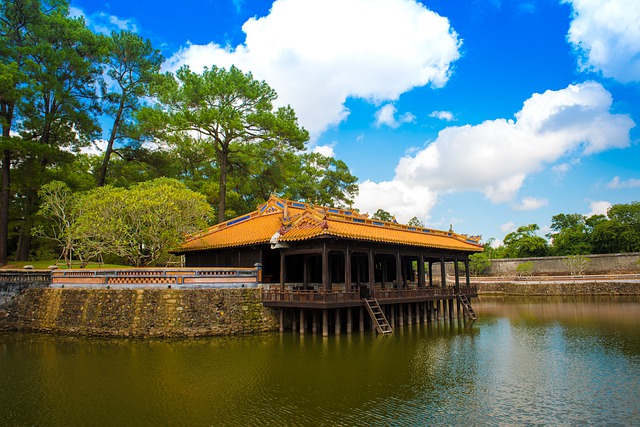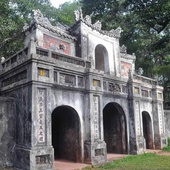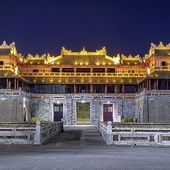Tu Duc Tomb
A glance at the tomb can create the illusion of a park, packed with frangipani trees and grove of pines.
Location & History
Situated in the scenic Duong Xuan Thuong Village, approximately 8 kilometers from Hue City, Tu Duc Tomb is recognized as one of the largest and most visually striking architectural works from the Nguyen Dynasty, encompassing royal palaces and tombs. Considered a must-visit destination for travelers exploring Hue City, Tu Duc Tomb offers a glimpse into Vietnam's imperial past.
Construction of the tomb took place between 1864 and 1867. The extensive resources and labor required to complete Tu Duc's tomb led to a significant rebellion among workers. Consequently, the tomb was renamed Khiem Lang, reflecting a departure from its original name, Van Nien Co (meaning a desire for permanence). In keeping with the king's wish to demonstrate humility, all related structures were designated with the term Khiem (Modesty) in their names.
 Photo by Đoàn Tiến from Pixabay
Photo by Đoàn Tiến from Pixabay
This site served as a retreat for the emperor, providing a tranquil escape from the Citadel where he could write poetry and hunt, as the complex was completed during his reign. The tomb's design showcases the king’s deep understanding of aesthetics and romanticism.
What To See
Entering the tomb complex resembles stepping into a picturesque park replete with lakes, hills, and pavilions nestled amid frangipani trees and pine groves. A sturdy octagonal wall encircles the area. Key highlights within the complex include Luu Khiem Lake, Tinh Khiem Island, Xung Khiem Pavilion, and Hoa Khiem Temple, which honors both the King and the Queen. Hoa Khiem Temple also serves as a small museum that houses personal artifacts from the king’s life, including a mirror once used by his concubines, a lock presented by the French, and the funerary tablets of the emperor and empress. Additionally, the tomb features a royal theater named Minh Khiem Duong, which reflects Tu Duc's poetic nature, with a ceiling adorned with carvings of stars, clouds, crescent moons, and the sky. While performances no longer occur in this theater, they are now held at Xung Khiem Ta, situated near Luu Khiem Lake.
The tomb area includes the Honour Courtyard, the Stele Pavilion, and the sepulcher. The Stele Pavilion is noted as the largest of its kind in Vietnam, housing inscriptions by the king detailing his life and accomplishments.
Visitors to Tu Duc Tomb often feel as though they have wandered into an expansive scenic park where ancient feudal monuments seamlessly blend with the surrounding natural beauty.
How To Get There
Traveling to Tu Duc Tomb is best accomplished via motorbike, car, or bicycle. This site can be conveniently included in guided tours alongside Khai Dinh Tomb and Tu Hieu Pagoda. As exploring the tomb involves considerable walking, comfortable footwear is highly recommended.
Useful Information
- Location: Thuy Xuan Commune, Hue
- Best for: Family, couple, solo
- Entrance: 55,000
- Hours: 8:00 AM - 6:00 PM
- Distance to city center: 3.2km (2.0 mi)

Tu Hieu Pagoda
In Hue - one of Vietnam's most sacred lands of Buddhism, Tu Hieu is regarded as the largest and oldest pagoda, and also a famous sightseeing spot with historical and cultural value.

Hon Chen Temple
Hon Chen Temple is situated on a lovely slope of Ngoc Tran Mountain, 10km upstream from Hue Centre. The name “Ngoc Tran'' means Pearl Bowl, originating from the bowl-shape of the mountain. That also gives the temple its name: Hon Chen.

Hue Imperial Citadel
Famously being one of Vietnam’s seven UNESCO World Heritage Sites, the Imperial City of Hue has long been a must-see attraction for tourists visiting a hidden charm of Vietnam.








